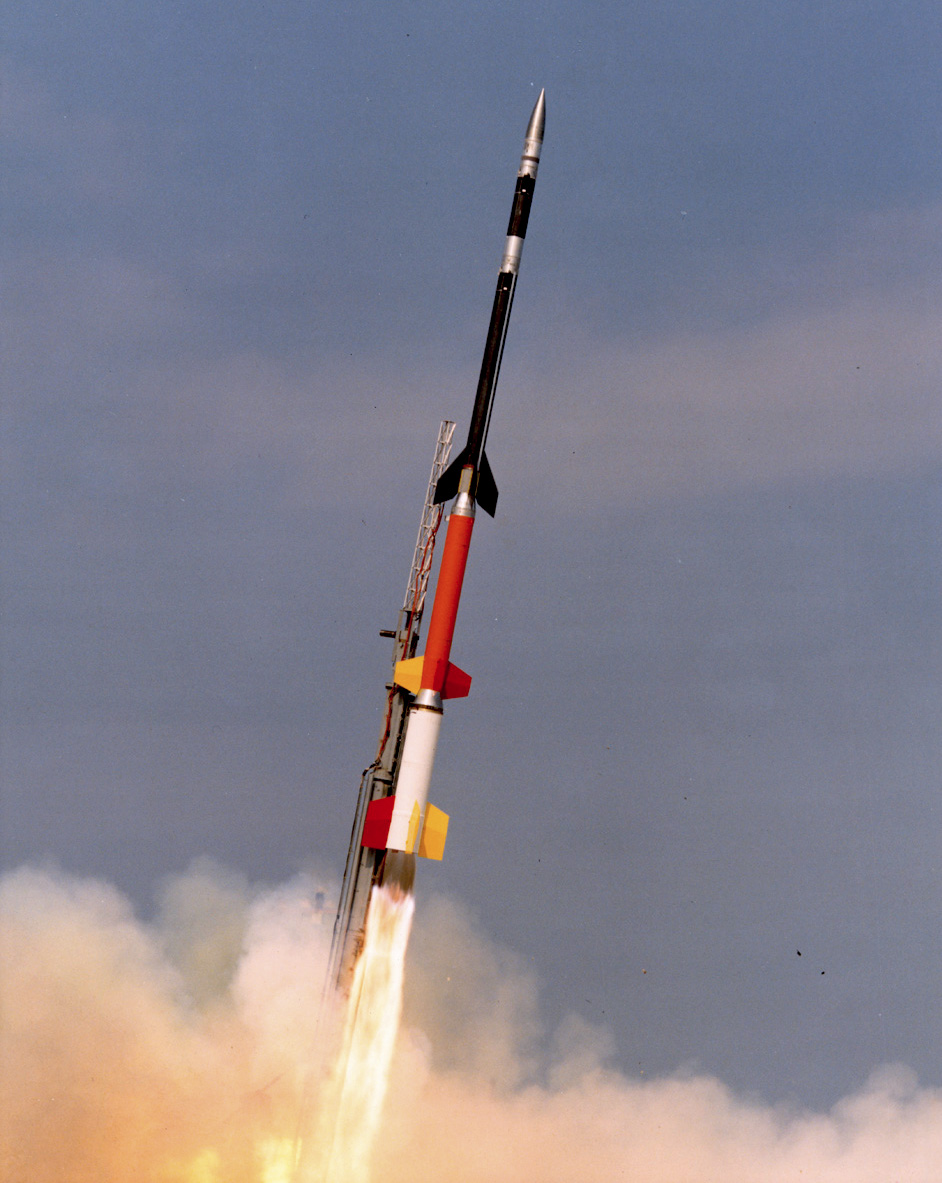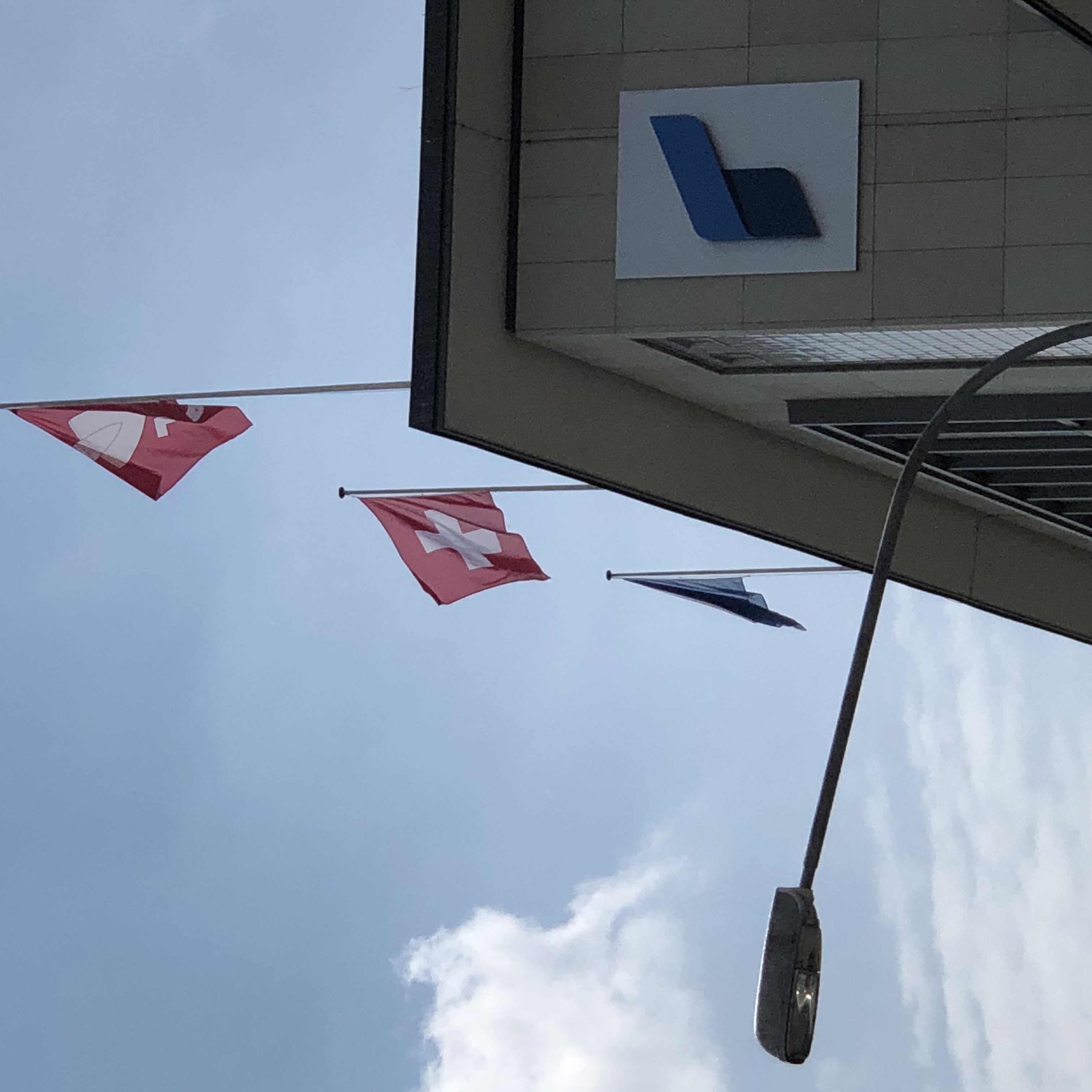|
Zenit-C
Zenit-C was a sounding rocket developed by Oerlikon Contraves (today Rheinmetall Air Defence) in Switzerland. The Zenit was a single-stage rocket with a length of 5.6 meters, a diameter of 0.42 meter and a takeoff weight of 610 kilograms. Propelled by a solid-propellant engine which supplied a thrust between 45 kN at launch and 22 kN in flight, the Zenit could carry a payload of 25 kilograms to a height of 210 km or a payload of 130 kilograms to a height of 115 km. At its maiden flight on October 27, 1967, at Salto di Quirra the Zenit topped 145 km. The Zenit was later launched only twice — once on July 30, 1971, at Salto di Quirra with a British Cuckoo rocket as a starting stage and once on December 13, 1973, at Andøya likewise with a "Cuckoo" starting stage. Cuckoo was used as a starting stage on British Skylark rocket. Oerlikon used the knowledge from the Ground to Air Missile RSE Kriens RSE Kriens was a Swiss-developed surface-to-air missile ... [...More Info...] [...Related Items...] OR: [Wikipedia] [Google] [Baidu] |
RSE Kriens (missile)
RSE Kriens was a Swiss-developed surface-to-air missile. It never entered service. It was named Kriens after Kriens, a village located in the canton of Lucerne. Design and development From 1959 to 1966, Contraves, along with many other Swiss companies, developed the Kriens, while drawing on the experience of the guided missile system RSC / D, RSD 58. The missile project was funded by both private Swiss companies, as well as the federal government, and was developed up to production-ready stage. The first flight was on 23 March 1964. The missile's modular system used advanced technology for the ground equipment and the missiles, and the whole system could be interconnected to a multi-part cluster, which included several radars and missile launchers. However, after introduction of the British Bristol Bloodhound The Bristol Bloodhound is a British ramjet powered surface-to-air missile developed during the 1950s. It served as the UK's main air defence weapon into the 1990s and ... [...More Info...] [...Related Items...] OR: [Wikipedia] [Google] [Baidu] |
Salto Di Quirra
Salto di Quirra is a restricted weapons testing range and rocket launch site near Perdasdefogu on the island of Sardinia. It is the largest military range in Italy, composed of 12,000 hectares of land owned by the Ministry of Defence (Italy), Italian Ministry of Defence and one of the largest in operation within the European Union. Birth defects and cancer in the area have been blamed on weaponry used at the site. Sardinia hosts about 60% of Italian military ranges and together with Friuli-Venezia Giulia is one of the most militarized regions of Italy. Salto di Quirra primarily launches military rockets, but civilian rockets, such as the Skylark (rocket), Skylark, have occasionally been launched for the study of the upper atmosphere. The Salto di Quirra range is located close to the town of Perdasdefogu in a mountainous zone at the southeast of Sardinia. It is an inter-arm range, currently placed under the authority of the Italian Air Force. Its main activity deals with the test ... [...More Info...] [...Related Items...] OR: [Wikipedia] [Google] [Baidu] |
Sounding Rocket
A sounding rocket or rocketsonde, sometimes called a research rocket or a suborbital rocket, is an instrument-carrying rocket designed to take measurements and perform scientific experiments during its sub-orbital flight. The rockets are often used to launch instruments from above the surface of the Earth, the altitude generally between weather balloons and satellites; the maximum altitude for balloons is about and the minimum for satellites is approximately . Due to their suborbital flight profile, sounding rockets are often much simpler than their counterparts built for orbital flight. Certain sounding rockets have an apogee between , such as the Black Brant X and XII, which is the maximum apogee of their class. For certain purposes, sounding rockets may be flown to altitudes as high as to allow observing times of around 40 minutes to provide geophysical observations of the magnetosphere, ionosphere, thermosphere, and mesosphere. Etymology The origin of the term comes fr ... [...More Info...] [...Related Items...] OR: [Wikipedia] [Google] [Baidu] |
Oerlikon Contraves
Rheinmetall Air Defence AG is a division of German armament manufacturer Rheinmetall, created when the company's Oerlikon Contraves unit was renamed on 1 January 2009 and integrated with Rheinmetall's other air-defence products. Oerlikon Contraves was a Swiss anti-aircraft artillery manufacturer famous for its adaptation of the 1916 20 mm Becker as the Oerlikon 20 mm autocannon design, which was used in the Second World War and remains in use. Copies and derivatives of these designs were made by German, French, British, and Japanese weapon manufacturers. Oerlikon Contraves was purchased by Rheinmetall in 1999. , Rheinmetall Air Defence had around 1,050 employees at locations in Switzerland, Germany, Italy, and Canada. The group's sales were about . History Oerlikon's earliest predecessor was Schweizerische Werkzeugmaschinenfabrik Oerlikon, founded in the Oerlikon district of Zürich, Switzerland in 1906. In 1923 it acquired a factory in Germany. It entered the anti-ai ... [...More Info...] [...Related Items...] OR: [Wikipedia] [Google] [Baidu] |
Rheinmetall Air Defence
Rheinmetall Air Defence AG is a division of German armament manufacturer Rheinmetall, created when the company's Oerlikon Contraves unit was renamed on 1 January 2009 and integrated with Rheinmetall's other air-defence products. Oerlikon Contraves was a Swiss anti-aircraft artillery manufacturer famous for its adaptation of the 1916 20 mm Becker as the Oerlikon 20 mm autocannon design, which was used in the Second World War and remains in use. Copies and derivatives of these designs were made by German, French, British, and Japanese weapon manufacturers. Oerlikon Contraves was purchased by Rheinmetall in 1999. , Rheinmetall Air Defence had around 1,050 employees at locations in Switzerland, Germany, Italy, and Canada. The group's sales were about . History Oerlikon's earliest predecessor was Schweizerische Werkzeugmaschinenfabrik Oerlikon, founded in the Oerlikon district of Zürich, Switzerland in 1906. In 1923 it acquired a factory in Germany. It entered the anti-airc ... [...More Info...] [...Related Items...] OR: [Wikipedia] [Google] [Baidu] |
Cuckoo (rocket)
Cuckoos are birds in the Cuculidae ( ) family, the sole taxon in the order Cuculiformes ( ). The cuckoo family includes the common or European cuckoo, roadrunners, koels, malkohas, couas, coucals, and anis. The coucals and anis are sometimes separated as distinct families, the Centropodidae and Crotophagidae, respectively. The cuckoo order Cuculiformes is one of three that make up the Otidimorphae, the other two being the turacos and the bustards. The family Cuculidae contains 150 species, which are divided into 33 genera. The cuckoos are generally medium-sized, slender birds. Most species live in trees, though a sizeable minority are ground-dwelling. The family has a cosmopolitan distribution; the majority of species are tropical. Some species are migratory. The cuckoos feed on insects, insect larvae, and a variety of other animals, as well as fruit. Some species are brood parasites, laying their eggs in the nests of other species and giving rise to the terms "cuckoo's eg ... [...More Info...] [...Related Items...] OR: [Wikipedia] [Google] [Baidu] |
Andøya
, , or is the northernmost island in the Vesterålen archipelago, situated about inside the Arctic Circle. Andøya is located in Andøy Municipality in Nordland county, Norway. The main population centres on the island include the villages of Andenes, Bleik, and Risøyhamn. The island has an area of , making it the tenth largest island in Norway. The island is connected to the neighboring island of Hinnøya via the Andøy Bridge. The Andfjorden lies to the east of the island, the Risøysundet strait lies to the south and east side of the island, and the Gavlfjorden lies to the southwest side. The Norwegian Sea lies to the west and north. The numerous bog areas on Andøya are used for the extensive production of peat. Andøya is also well known for its cloudberries. Besides the flat and largely continuous bog areas, Andøya also consists of steep mountain ranges reaching up to high. The sharp peak of Kvasstinden is the highest point on the island at . Andøya Space, ... [...More Info...] [...Related Items...] OR: [Wikipedia] [Google] [Baidu] |
Skylark (rocket)
Skylark was a family of British sounding rockets. It was operational between 1957 and 2005. Development of the Skylark begun during the early 1950s at the Royal Aircraft Establishment (RAE), which approached the Royal Society with an offer for it to carry scientific experiments. During early 1955, the British government agreed to provide £100,000 to support the programme's operations for four years. Development of the Skylark, initially known as the ''CTV.5 Series 3'', was pursued at a rapid pace, with hopes that initial launches could take place during the latter half of 1956. On 7 April 1956, the existence of the Skylark rocket was publicly revealed under the early name of ''Gassiot vehicle''. Launch facilities were established at the existing Woomera missile range in Australia; the Skylarks were produced in Britain and flown to Australia for final assembly, testing, and launching. The Skylark was first launched on 13 February 1957; the first scientific mission occurred d ... [...More Info...] [...Related Items...] OR: [Wikipedia] [Google] [Baidu] |




